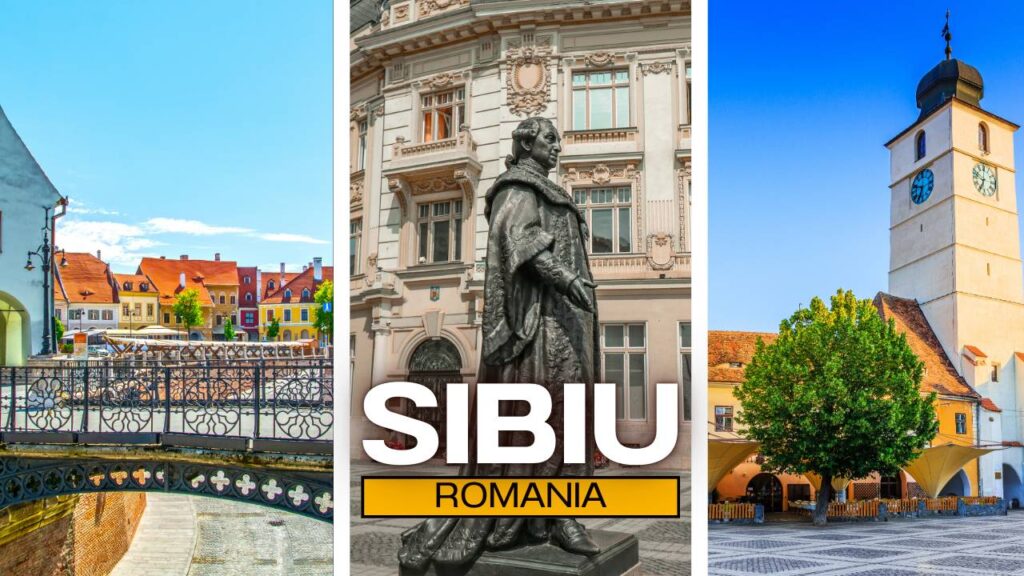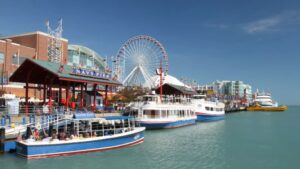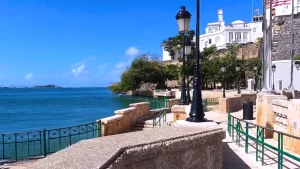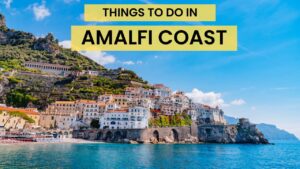Plan your perfect trip to Sibiu with this complete guide covering the best ways to reach the city, the ideal seasons to visit, and the top attractions you shouldn’t miss.
Located away in the heart of Romania’s Transylvania region, Sibiu is a picturesque medieval city that blends historical charm with cultural vibrancy. From cobblestone streets and Gothic architecture to modern art galleries and mountain escapes, Sibiu offers a unique European experience away from the crowded tourist paths. A history enthusiast, a cultural explorer, or a nature lover, this guide will walk you through everything you need to know: how to reach Sibiu, the best time to visit Sibiu Romania, and the top attractions that make it an unforgettable destination.
How to Reach Sibiu
Reaching Sibiu is convenient, whether you’re traveling domestically within Romania or flying in from abroad. The city is well-connected by air, rail, and road networks, making it accessible from various parts of Europe and Romania itself.
By Air
Sibiu is home to its own international airport—Sibiu International Airport (SBZ)—located just 5 kilometers from the city center. It serves several European destinations, including Germany, Austria, Italy, and the UK. Popular airlines such as Lufthansa, Wizz Air, and Austrian Airlines operate regular flights, particularly during the tourist season. From the airport, you can easily reach the city by taxi, shuttle, or car rental, with travel times under 20 minutes.
By Train
Traveling by train is a scenic and budget-friendly option. Romanian Railways (CFR) offers frequent connections between Sibiu and major Romanian cities such as Bucharest, Cluj-Napoca, Brașov, and Timișoara. The journey from Bucharest to Sibiu typically takes about 6 to 7 hours, and although not the fastest, it allows you to enjoy beautiful views of the Carpathian Mountains and Transylvanian countryside.
By Road
For road travelers, Sibiu is accessible via the A1 motorway, which connects it to key Romanian cities like Bucharest and Timișoara. Driving gives you the flexibility to visit the surrounding villages and landscapes at your own pace. Long-distance buses also operate routes to Sibiu from cities across Romania and even nearby countries like Hungary. Companies such as FlixBus and Autogari provide affordable and reliable service.
Best Time to Visit Sibiu Romania
Best time to visit Sibiu, Romania, largely depends on your travel preferences and what you want to experience. Each season brings a unique flavor to the city, from winter festivities to summer cultural events.
Spring (March to May)
Spring is a refreshing time to visit as the city awakens from winter. The weather is mild, and blooming flowers bring color to the old town’s charming squares. Tourist crowds are fewer, making it ideal for those looking for a peaceful getaway. Late spring is especially beautiful for hiking in the nearby Făgăraș Mountains.
Summer (June to August)
If you’re a fan of cultural events and lively atmospheres, summer is undoubtedly the best time to visit Sibiu. The city hosts several internationally recognized festivals, including the Sibiu International Theatre Festival, which transforms the town into a massive open-air stage. Warm temperatures and long daylight hours also make it perfect for walking tours and exploring outdoor cafes.
Autumn (September to November)
Autumn in Sibiu is breathtaking, with golden leaves carpeting the historic streets. The weather remains comfortable through early October, and the tourist crowds begin to thin. It’s a wonderful time for photography, wine tasting, and attending local harvest festivals that celebrate Transylvanian traditions.
Winter (December to February)
Sibiu in winter turns into a magical fairy tale, especially during December when the Christmas Market lights up the central Piața Mare (Great Square). Snow-covered rooftops and festive decorations create a romantic and cozy atmosphere. Winter sports enthusiasts will also appreciate Sibiu’s proximity to skiing resorts like Păltiniș, just a short drive away.
Top Attractions in Sibiu, Romania
Sibiu, nestled in the heart of Transylvania, isn’t just a destination—it’s an experience. Known for its rich Saxon heritage, cobblestone streets, and eye-catching architecture, Sibiu offers an unforgettable journey through history, art, and culture. Here’s a deeper look at the top attractions that make Sibiu one of Romania’s most charming cities.
1. Piața Mare (The Great Square) – Sibiu’s Cultural Stage
Piața Mare serves as Sibiu’s historical and cultural centerpiece. The expansive square has witnessed royal parades, public executions, and grand festivals since the 15th century. Today, it draws both locals and visitors with its open-air concerts, seasonal markets, and architecture that reflects Sibiu’s Saxon past.
Cafés line the square, offering perfect spots to enjoy a coffee while admiring landmarks like the Brukenthal Palace, the Roman Catholic Church, and the Council Tower. Don’t miss the Christmas Market, where the square transforms into a winter wonderland with thousands of lights, wooden stalls, and traditional foods.
2. Brukenthal National Museum – Treasure Trove of European Art
Located right in Piața Mare, the Brukenthal National Museum sits inside the opulent Brukenthal Palace, once the residence of Governor Samuel von Brukenthal. Built in late Baroque style, the palace houses a collection of over 1,200 European paintings from the 15th to 18th centuries, featuring masters like Van Eyck, Rubens, and Titian.
But the museum is not limited to fine art—you’ll also find Romanian art, medieval weapons, coins, and books, as well as temporary exhibitions in modern art and photography. The museum complex spans six institutions, including the Museum of History, Pharmacy Museum, and Museum of Contemporary Art, offering something for every type of culture enthusiast.
3. The Bridge of Lies (Podul Minciunilor) – Myths Meet Architecture
As you walk across the Bridge of Lies, you’re stepping onto the most famous bridge in Transylvania. Built in 1859 as Romania’s first wrought iron bridge, this structure has become legendary due to folklore. The most popular story claims that the bridge will “creak” or even collapse if someone lies while standing on it.
The bridge connects Piata Mica with the Huet Square, and from here, you’ll enjoy stunning views of the lower town, colorful rooftops, and bustling alleys. The bridge also lights up beautifully at night, making it ideal for evening walks and photographs.
4. Sibiu Lutheran Cathedral (St. Mary’s Evangelical Church) – Towering Icon
Standing tall since the 14th century, the Lutheran Cathedral of St. Mary is one of the tallest Gothic churches in Romania. Its 73-meter-high spire towers over Sibiu’s old town and can be seen from miles away. Inside, you’ll find a massive pipe organ with over 6,000 pipes—one of the largest in Southeast Europe.
Historical figures like Baron Brukenthal are buried here, and medieval frescoes decorate the side chapels. You can climb to the top of the tower for breathtaking views of Sibiu and the nearby Făgăraș Mountains. During summer, the cathedral hosts weekly organ concerts, drawing classical music fans from around the world.
5. ASTRA Museum of Traditional Folk Civilization – Romania’s Rural Legacy
Just a 10-minute drive from central Sibiu, the ASTRA Museum stretches across 96 hectares in the Dumbrava Forest. This open-air museum is one of Europe’s largest and most immersive ethnographic museums. You’ll walk through winding paths that lead to over 300 authentic wooden houses, windmills, watermills, and traditional workshops. Each structure was relocated from rural villages across Romania and reconstructed to preserve authenticity.
The museum hosts folk craft demonstrations, traditional festivals, and seasonal fairs. You can take rowboat rides, enjoy horse-drawn carriage tours, or even attend cooking classes on traditional Romanian cuisine. It’s ideal for families, photographers, and cultural explorers.
6. The Council Tower (Turnul Sfatului) – View into the Past
Rising between Piața Mare and Piața Mică, the Council Tower dates back to the 13th century and has played many roles—from grain storage to firewatch tower. As you climb its steep, narrow staircase, you’ll see layers of Sibiu’s medieval history in the stone walls and timber beams.
At the top, enjoy 360-degree views of the city’s red-tiled roofs, church spires, and even the Carpathian Mountains on clear days. Inside, the tower often features art exhibitions and photo galleries, adding a creative touch to your visit.
7. Piata Mica (The Small Square) – Where History Feels Personal
Tucked right beside the bustling Piața Mare, Piața Mică offers a more intimate slice of Sibiu. This square features charming arcaded buildings, boutique shops, and some of the city’s coziest restaurants. You’ll notice the “eyed” rooftops—dormer windows built centuries ago that resemble watchful eyes, giving Sibiu its distinctive fairytale look.
Visit narrow side alleys that lead to underground wine cellars or quiet courtyards, and take time to visit the House of the Arts, which often hosts local artisan exhibits and cultural performances. It’s the perfect place for a relaxed afternoon or evening under glowing lanterns.
8. Orthodox Cathedral of the Holy Trinity – Spiritual Masterpiece
Modeled after Istanbul’s Hagia Sophia, this early 20th-century cathedral stands as one of Romania’s most significant Orthodox churches. Its Neo-Byzantine architecture impresses from the first glance, with a massive dome, arched windows, and twin towers. Inside, golden mosaics, vibrant frescoes, and a lavish iconostasis transport visitors into an atmosphere of reverence and awe.
As the spiritual center for the city’s Orthodox community, the cathedral offers a peaceful retreat where you can witness Romanian religious art at its finest. Try to visit during Easter or Christmas to experience the beauty of Romanian Orthodox liturgy and choral music.
FAQs
1. Where is Sibiu located in Romania?
Sibiu is located in central Romania, in the region of Transylvania, nestled at the base of the Southern Carpathian Mountains. It lies along the Cibin River and serves as the capital of Sibiu County. The city is about 275 km northwest of Bucharest.
2. How can I reach Sibiu?
You can reach Sibiu by air, train, or road. The Sibiu International Airport (SBZ) connects the city to major European hubs like Munich, London, and Vienna. Direct trains and buses from Bucharest, Cluj-Napoca, and Brașov are available, and national roads like E68 and DN1 link Sibiu to the rest of Romania.
3. What is the best time to visit Sibiu?
The best time to visit Sibiu is during the spring (April to June) and fall (September to October) when the weather is pleasant and the crowds are smaller. December is also magical thanks to the famous Sibiu Christmas Market, considered one of the best in Eastern Europe.
4. Is Sibiu worth visiting for a weekend trip?
Absolutely! Sibiu is compact yet full of history, culture, and charm. A 2–3 day trip allows you to visit its main squares, climb the Council Tower, visit the Brukenthal Museum, and enjoy Romanian cuisine at local restaurants. It’s ideal for a short cultural escape.
5. What are the must-see attractions in Sibiu?
Top attractions include:
- Piața Mare (Great Square)
- Brukenthal National Museum
- The Bridge of Lies
- Lutheran Cathedral of St. Mary
- ASTRA Folk Museum
- Council Tower (Turnul Sfatului)
- Orthodox Cathedral of the Holy Trinity
Each spot showcases a different aspect of Sibiu’s rich heritage.
6. Is Sibiu a walkable city?
Yes, Sibiu is very walkable. The Old Town is compact, with most major attractions within walking distance. The cobblestone streets, historical squares, and pedestrian zones make it perfect for exploring on foot. Be sure to wear comfortable shoes, especially for climbing towers and walking on uneven stones.
7. What local foods should I try in Sibiu?
Sibiu offers a taste of traditional Transylvanian cuisine. Try dishes like:
- Ciorbă de burtă (tripe soup)
- Sarmale (stuffed cabbage rolls)
- Mici (grilled minced meat rolls)
- Papanași (fried doughnuts with cheese and jam)
Pair your meal with local wines or tuica (plum brandy) for a full Romanian experience.
8. Are there day trips from Sibiu worth taking?
Yes! Popular day trips include:
- Transfăgărășan Highway – One of the world’s most scenic roads
- Corvin Castle – A fairytale Gothic fortress in Hunedoara
- Rășinari & Cisnădioara villages – Traditional Saxon villages with fortified churches
- Ocna Sibiului – A saltwater lake spa resort great for relaxation
9. Is English widely spoken in Sibiu?
In tourist areas, hotels, restaurants, and shops, English is commonly spoken, especially by younger people and staff working in tourism. Learning a few Romanian phrases like “Bună ziua” (Hello) or “Mulțumesc” (Thank you) is appreciated by locals.
10. What makes Sibiu unique compared to other Romanian cities?
Sibiu stands out for its well-preserved medieval architecture, vibrant cultural life, and Saxon heritage. It was named European Capital of Culture in 2007, and its charming “eyed” rooftops, colorful facades, and artistic energy make it one of Romania’s most atmospheric cities. Its perfect blend of tradition and modernity attracts history lovers, artists, and curious travelers alike.






